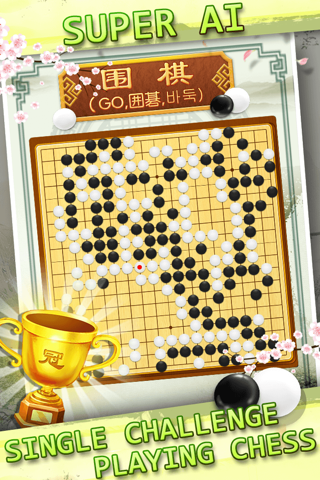
GO is an abstract strategy board game for two players, in which the aim is to surround more territory than the opponent.The game originated in ancient China more than 2,500 years ago, and is one of the oldest board games played today.
The playing pieces are called "stones". One player uses the white stones and the other, black. The players take turns placing the stones on the vacant intersections ("points") of a board with a 19×19 grid of lines. Beginners often play on smaller 9×9 and 13×13 boards.
The objective of the game—as the translation of its name implies—is to surround a larger total area of the board than the opponent.
Once placed on the board, stones may not be moved, but stones are removed from the board when captured. Capture happens when a stone or group of stones is surrounded by opposing stones on all orthogonally-adjacent points.The game proceeds until neither player wishes to make another move; the game has no set ending conditions beyond this. When a game concludes, and the territory is counted along with captured stones and komi (points added to the score of the player with the white stones as compensation for playing second) to determine the winner. Games may also be terminated by resignation.
Basic rules
Two players, Black and White, take turns placing a stone (game piece) of their own color on a vacant point (intersection) of the grid on a Go board. Black plays first. If there is a large difference in skill between the players, the weaker player typically uses Black and is allowed to place two or more stones on the board to compensate for the difference (see Go handicaps). The official grid comprises 19×19 lines, though the rules can be applied to any grid size. 13×13 and 9×9 boards are popular choices to teach beginners. Once placed, a stone may not be moved to a different point.
Vertically and horizontally adjacent stones of the same color form a chain (also called a string or group) that cannot subsequently be subdivided and, in effect, becomes a single larger stone. Only stones immediately connected to one another by the lines on the board create a chain; stones that are diagonally adjacent are not connected. Chains may be expanded by placing additional stones on adjacent intersections, and can be connected together by placing a stone on an intersection that is adjacent to two or more chains of the same color.


